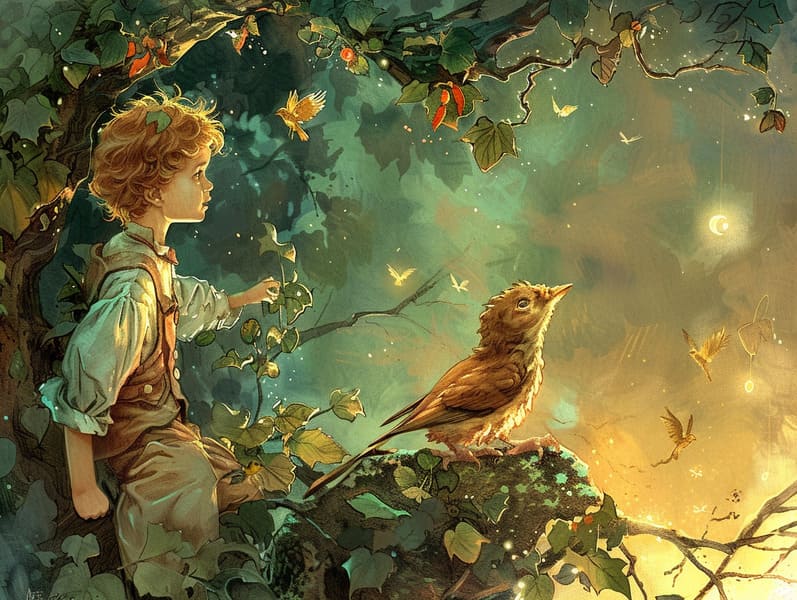Delving into the Background of Classic Fairy Tales and Its Undying Elegance.
Delving into the Background of Classic Fairy Tales and Its Undying Elegance.
Blog Article

Old fairy tales have enduring presence. These tales have been narrated from one generation to the next ages before they were ever put on paper. They were born from a variety of traditions, including African traditions. They were initially told among adults, often carrying themes and messages relevant to the societal norms and beliefs of the time.
Jacob and Wilhelm Grimm, Jacob and Wilhelm, were among the first to collect many of these beloved narratives. Their collection, "Grimm's Fairy Stories," included narratives like "Cinder Maid," "Hansel and Grethel," and "Snow-White and Rose-Red," which have since become staples in the world of classic fairy tales. Similarly, Andersen's delightful tales, such as "The Mermaid's Tale," and "The Little Duckling," have captured hearts worldwide, establishing their place in the pantheon of classic fairy tales.
Even though they are old, traditional fairy tales remain as relevant as ever, especially as nighttime stories for kids. These whimsical stories are now available in diverse formats, including vividly illustrated books, delightful animations, and web-based fairy tales.
Their lasting appeal can be ascribed to several enchanting factors:
Valuable Lessons: Old fairy tales often illustrate important moral lessons. Tales like "The Tale of the Boy Who Cried Wolf" teach the merit of integrity, while "The Story of the Tortoise and the Hare" point out the merits of determination and humbleness. These narratives offer children clear distinctions between right and wrong, shaping their moral compass in a mild yet profound way.
Compassion and Insight: Old fairy tales frequently portray characters facing tests and troubles, stimulating kids to empathize with their struggles and rally behind their triumphs. For instance, "The Tale of Beauty and the Beast" points out the necessity of seeing beyond looks to recognize the true character of a soul, fostering tenderness and awareness.
Cultural Awareness: Many timeless fairy tales are steeped in the cultural contexts from which they were born. Immersing in these narratives can provide informative snapshots into different ways of life, promoting a sense of cultural appreciation and respect.
Fantasy and Imagination: The supernatural elements in old fairy tales—enchanted lands—promote children’s visions and dreams. These tales move readers to enchanted realms, triggering creative dreams and a sense of delight that continues a lifetime.
Classic fairy tales are not only spellbinding but also illuminating. They function as alluring tools in fostering various brain and heart skills in young ones. When traditional fairy tales are read aloud, they enhance verbal skills by offering new linguistic elements and complicated sentence structures. This practice also promotes listening skills and attention span, as kids follow the story, anxious to see what happens next.
Furthermore, debating the themes and characters of traditional fairy tales can cultivate analytical skills and analytical skills. Young ones are led to find patterns, anticipate outcomes, and catch on to cause and effect. These conversations also promote young readers reveal their thoughts and feelings, advancing their emotional intelligence.
In today’s electronic age, the existence of online storybooks has made these narratives more reachable than ever. Web-based platforms and mobile apps provide wide arrays of children's fairy tales that can be seen or heard anytime, anywhere. Fairy tales read out loud are particularly liked, featuring an delightful method for young readers to engage with these captivating stories. Audio stories and read-out-loud stories lead characters and settings to life, often supplemented by delightful music and musical scores that augment the story journey.
The unfading fascination of ancient fairy tales lies in their ability to change to changing times while sustaining their core messages. Contemporary revisions of these stories often highlight more representative characters and modern settings, making them relevant to today’s audience. However, the core values of gallantry, generosity, and truth remain unchanged, continuing to move readers of all ages.
Traditional fairy tales also offer a sense of serenity and familiarity. They confer upon a organized narrative with a definite beginning, middle, and end, often closing with the finalization of conflicts and the triumph of good over bad. This certainty can be comforting for children, showcasing a sense of dependability in an fluid world.
Old fairy tales continue to captivate and educate new generations, maintaining their captivation and impact in modern society. As kids' bedtime tales, they serve a perfect blend of fantasy and learning, aiding moral values, empathy, and creativity. The proliferation of digital fairy tales and the popularity of fairy this site tales voiced promise that these classic narratives remain reachable to new generations.
By preserving and distributing these tales, we continue to extol the rich tapestry of myths and cultural heritage. Whether you are experiencing a gorgeously illustrated book, exploring a virtual collection, or listening on an read-aloud story, the appeal of classic fairy tales is always within reach. These fairy tales illustrate of the eternal effect of narratives and its ability to bind us across generations and cultures.
Even if you are accessing a colorful picture book, experiencing a internet collection, or listening to an audio story, the radiance of old fairy tales is always within reach.
These fairy tales teach us of the lasting power of fairy tales and its ability to join us across generations and cultures, forming a connection that captivates and teaches alike.